This page was started because of an enquiry by Bryan Bignell. In February 2005, Bryan emailed me asking if I knew anything about Bell Hill Road, St. George and also if anyone knew anything of old apprentices from Strachan and Henshaw. Bryan also emailed me again in April 2010 with additional photographs and information.
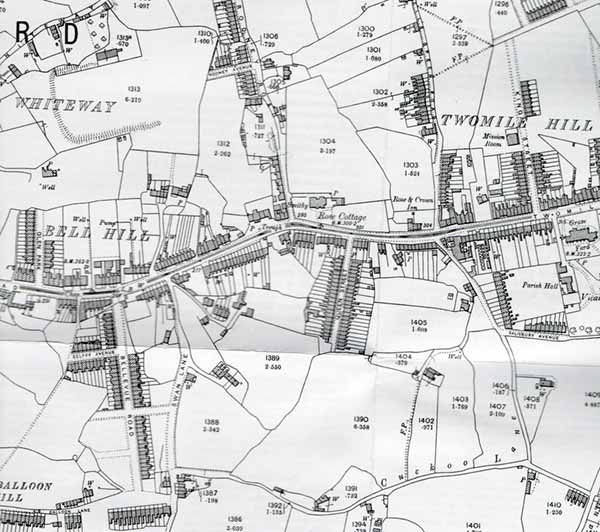
Bell Hill & Two Mile Hill from a 1902 Ordnance Survey Map
In reply to the first enquiry I found the following photograph...
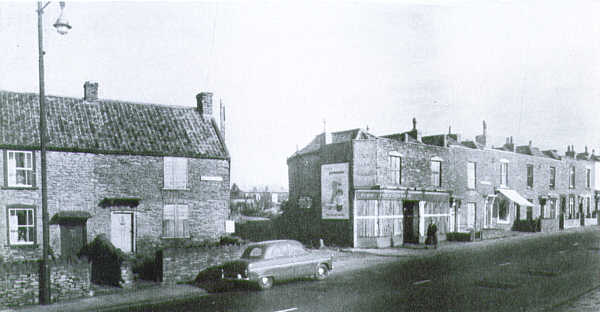
Bell Hill Rd., St. George
Bell Hill Rd. is left, Two Mile Hill Rd. is right.
The shop sold fish and vegetables, but in the photo is already boarded up.
The houses were all demolished to make way for newer ones.
(from "Bristol As It Was 1960-1962", Reece Winstone, 1981, plate 180)
Bryan very kindly emailed back with some information about the photograph. He wrote...
The shop with the awing out, was Harris's the bacon and cooked meat shop, above just on the edge of the photo is Hewitts the grocers. My Grandparents house was at 174 Bell Hill opposite the boarded up shop. In time, around 1912 to 1920, it was a shop selling animal feedstuff etc. My Grandparents surname was Perrett and grandpa Perrett was the gardener for Doctor Foss and his family in the large house that used to be called Summerfield House on the Hanham road. The lane next to the boarded-up shop led to the football pitch where St. George's team played. The second cottage in, facing, was the home of the Austin sisters. Opposite Harris's shop was Swan Lane on the corner of which was a Coal merchant, but all this was when I was a lad in the 30's. My home was about 50 yards up Two Mile Hill Road. on the opposite side, at no. 18.
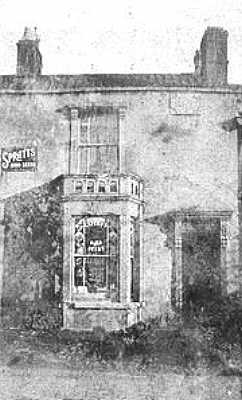
East Cheap Forage Shop at 174 Bell Hill Road
This photo was taken around the time of WWI (1914 - 1918)
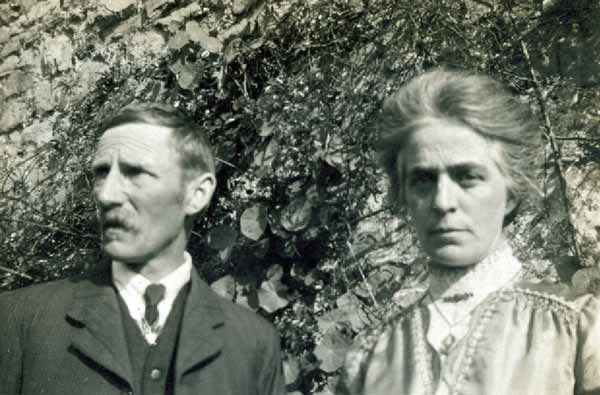
Bryan's Grandparents - James and Sarah Perrett
These owned East Cheap Forage Shop selling animal feedstuffs
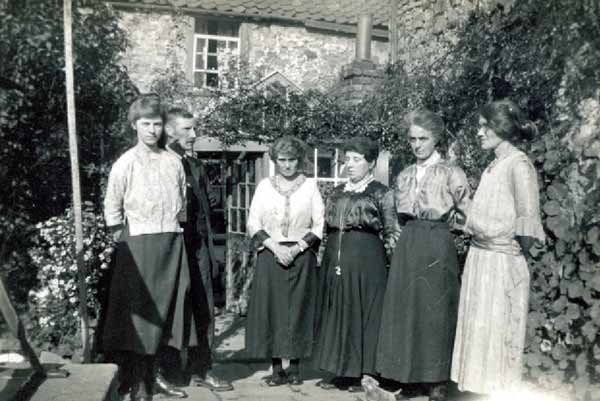
A Perretts family photo
This photgraph was taken around 1916 and shows James the gardener at home with three of his sisters and his wife sarah and daugter, Dorothy. The lady on the far right is Georgina, one of James' sisters. She collected American post cards.
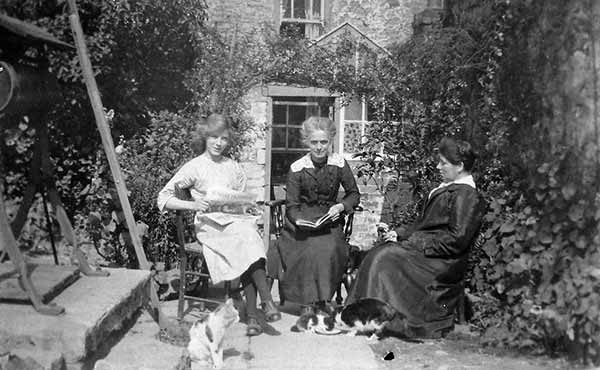
Bryan's grandmother (centre), her elder sister-in-law, Sophia (right), and Bryan's mother (left)
The photograph was taken around 1918, at the rear of the shop and shows the deep well from which they drew water. Bryan's grandmother's elder sister-in-law, Sophia, ran a boarding house in Weston-super-Mare. Bryan's mother is reading the Sunday Pictorial which was first published in 1915 and changed it's name to the Sunday Mirror in 1963.

Sarah Perrett, Bryan's grandmother sat in E. Nicholl's and wifes' car
James Perrett was also a gardener who lived at 174 Bell Hill in the shop and had also worked for William Butler of the tar works fame, and then later for his son-in-law Doctor Foss of Summerhill House. James was responsible for planting the long avenue of Plane Trees in St Georges Park which were donated by William Butler, his employer at the time.
In 1838, John Bethell took out a patent (No. 7731) for preserving wood with creosote. Brunel needed the process for preserving the sleepers of his railroad and in 1843, with the financial support of Roberts and Daines, Iron Masters in St Philips, and the lease & technical expertise of Bethell, Brunell set up a tar works in Crew's Hole. He chose one of his employees, William Butler, who had been working on the construction of the Bristol & Exeter railway line to take charge of the works. The crude tar was purchased from the local Gas Works. By 1863 the works was owned by William Butler, and traded under the style of Wm Butler & Co (Bristol) Limited.
This brief history of Tar Distillation at Crew's Hole, Bristol starts from John Bethell's patent No 7731 in 1838, the use of creosote for the preservation of wood. Isambard Kingdom Brunel, building miles of railway lines, needed a good preservative for his wooden sleepers. With the financial support of Roberts and Daines, Iron Masters in St Philips, and the lease & technical expertise of Bethell, he set up a Tar Works at Crew's Hole in 1843. He chose one of his employees, William Butler, who had been working on the construction of the Bristol & Exeter railway line to take charge of the works. The crude tar was purchased from the local Gas Works. By 1863 the works was owned by William Butler, and traded under the style of Wm Butler & Co (Bristol) Limited.
Butler also mixed the creosote with lamp black, pitch and small coal to make briquettes, and with gravel to make tarmacadam, named after Bristol road engineer John Loudon Macadam.
Source for the tar works: http://www.soci.org/Publications/~/media/Files/Conference%20Downloads/Bristol%20Tar%20Distillation%202002/Bristol_tar_distillation_2002.ashx
Later that month, Bryan sent more photographs and so this page was started. I'm indebted to Bryan for allowing his photographs to be used on these pages.
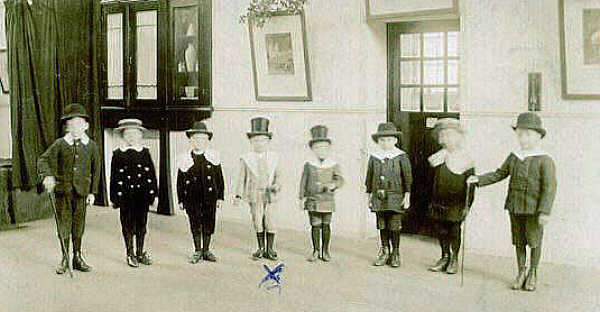
Main Hall of Air Balloon Infants School about 1909
Bryan's father is in this group, presumably the one with the cross beneath
This page created February 12, 2005, last modified January 25, 2022







